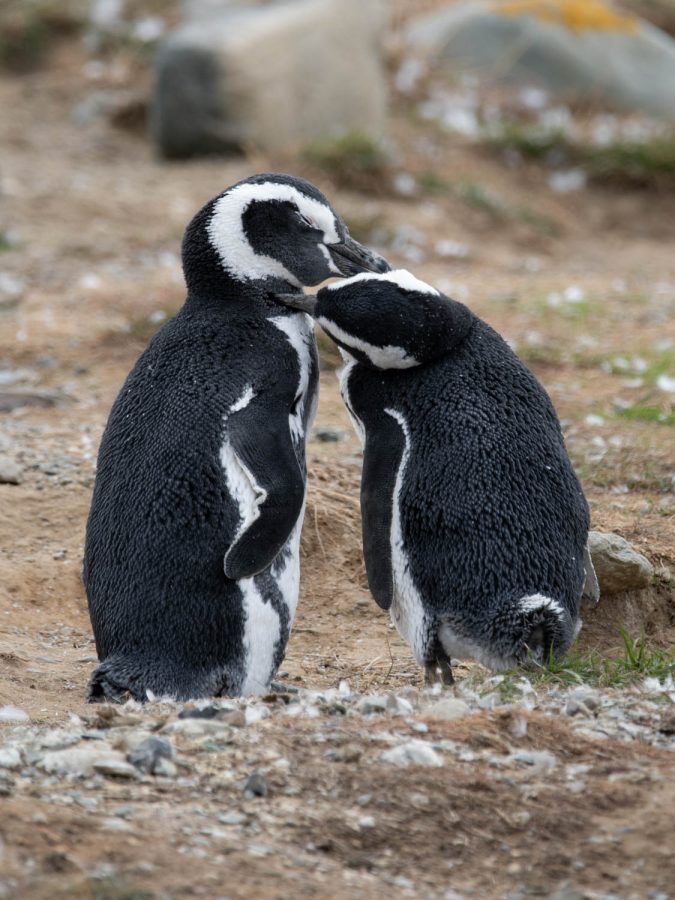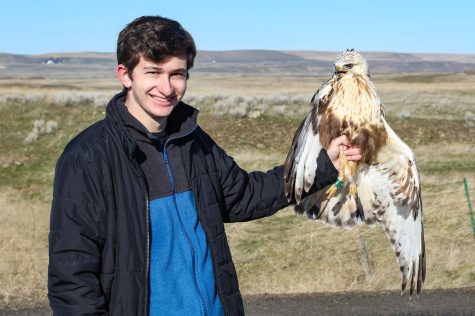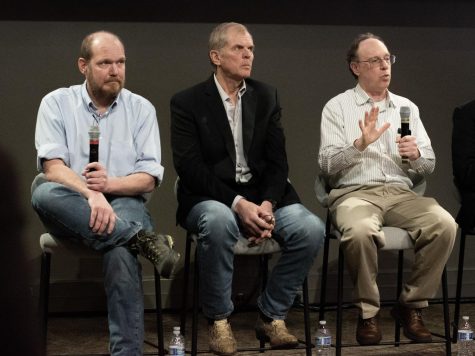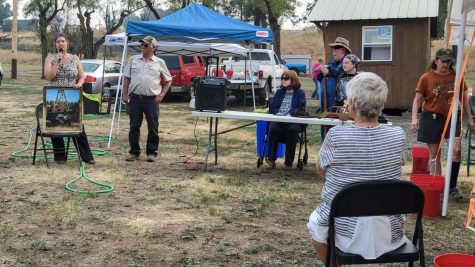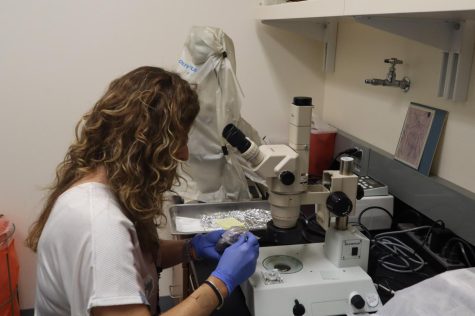Love in the Animal Kingdom
Animals tend to be a bit more straightforward than humans
Sometimes all you need to show some love is a preen and a pebble
February 8, 2023
For some couples, buying chocolates is enough to say ‘I love you.’ For others, a pebble will suffice.
With the approaching warm weather being ideal conditions for many animals to raise their young, now is the time to find a mate.
Great global biodiversity also means that these courtship rituals come in many different shapes and sizes. One well-known example is penguins, who often bring their mates pebbles to show they are ready to build a nest as a pair, according to BBC Earth.”
While penguins mate for life in pairs, not all species share the same system. On their mating grounds, male prairie chickens (a type of grouse) strut their stuff. They do this by inflating air-sacs in their neck to appear large and parading around to try and attract any females they can, said Lisa Shipley, WSU wildlife ecology professor.
“It’s kind of like dancing at a disco,” shared. “The females watch and go for the one who has the best dance.” The males work to attract as many females as they can while the females mate with as many males as they choose, picking the ones that they think have the best traits.
Shipley also shared that it is not always about showing off physical prowess; it can also be about showing the ability to care for young. Male bowerbirds, a group of colorful songbirds found in Australia and Southeast Asia, build “bowers” to attract mates.
“The bowerbird goes and picks out little trinkets — little colorful pieces of glass or beads or something similar — and then the female looks to see how well he’s done,” Shipley said.“Different bowerbirds like different colors”, she added, “so one will be picking up all of the blue glass, beads, and bottle lids, while another will choose a different color.”
In the Netflix documentary “Dancing with Birds,” many of these behaviors are highlighted alongside the bowerbirds, such as manakins in Central America dancing with a “wingman” and birds-of-paradise in Papua New Guinea showing off extravagant and strange feathers.
There are plenty of unique rituals outside of birds, of course. For example, in frogs, courtship often banks on the size not just of your body but of your voice.
“After it rains … It’s a competition to be the loudest for a lot of frogs. It’s about persistence and volume,” said frog researcher Eric Heisey.
Heisey researched frogs in Madagascar, where they greatly outnumber the birds, and said “in Madagascar and the neotropics, the dominant soundscape is actually frogs … day or night. You hear them calling constantly.”
“Being loud is a big part of it … and mate selection is largely competitive. If you’re a frog, you want to be the biggest and the loudest,” Heisey said, noting the importance of volume relative to size.
Despite this, he said, “it’s amazing to me how loud tiny frogs can be. There’s a frog we found in Madagascar that weighs a fraction of a gram … but makes a surprisingly loud sound that can be heard from 100 meters away. Some of the loudest frogs there are the smallest frogs.” It is cases like these that can often benefit the argument “size doesn’t matter.”
There are plenty of other unique ways that animals show their love, of course, and far too many to list. For this Valentine’s Day, though, maybe try another species’ way: give your partner a colorful rock, puff up your chest and do a little dance around them, or simply yell as loudly as you can. For all you know, it might just work better than those heart-shaped chocolates!

